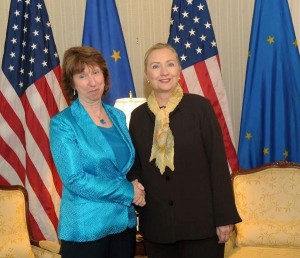Last Friday The Washington Post reported that Iran is building up its military capabilities to respond to the U.S. presence in the Persian Gulf. The report was widely read and sparked new fears of a conflict between the two countries.
The situation the Gulf should not be taken out of context, however. Taking into account all the dynamics of the Iran nuclear standoff, U.S. and Iranian activities in the Gulf seems less practical preparation for an imminent conflict and more signaling that plays into ongoing political discussions. While a conflict may not be inevitable, both sides must take care to avoid the miscommunications and provocations that could spark an unintentional conflict.
It’s not hard to see that Iran’s buildup, which includes expanding its arsenal of anti-ship missiles and fleet of small, heavily armed patrol boats, as a response to U.S. activities in the region. These include increasing anti-missile capabilities and deploying an aircraft carrier four months earlier than planned to decrease the time in which only one carrier would have been deployed in the Gulf.
These are significant steps, but they fall short of the rapid, deliberate buildup that would indicate an imminent conflict.
Iran’s response has a similar feel. Steps to improve its military capability and threats to close the Straits of Hormuz are followed by statements from Iranian leaders downplaying the threat to the Straits and announcing a possible return of diplomatic talks.
“”I can’t say it with certainty but if everything proceeds normally then there should be further negotiations,” Iranian foreign minister Ali Akbar Salehi said in a recent interview. “A breakdown (in talks) is in nobody’s interests. The gaps can only be closed through talking.”
Neither Iran nor the U.S. wants a war, and that’s a big reason why, as Micah Zenko explains, “A U.S.-Iran naval clash is not inevitable.” That doesn’t mean war won’t happen, however, especially if both sides don’t take care to keep these signs and signals from escalating into an unintended conflict.
“There are a lot of expectations to manage,” Senator John Kerry, chair of the Senate Foreign Relations Committee and ASP Board member, said in a recent interview. “People need to know you’re serious, but you must also leave room for peaceful resolution. It’s very important not to take steps that send the wrong messages here.”
Thus far both sides have avoided the kind of misstep that could cause a dangerous situation to spiral out of control. But bellicose rhetoric from all sides have not helped to ease tensions. And over thirty years of miscommunication and mistrust has not helped when it comes to managing expectations.
Both the U.S. and Iran have successfully walked the line in the Gulf. That’s a good sign; it shows that both sides are making calculated signals of their intentions but carefully avoiding a conflict that neither side wants. But this is no time for complacency. The risks of an unintended conflict are still very real. This knowledge should lend an added urgency to ongoing efforts to find a diplomatic solution.



